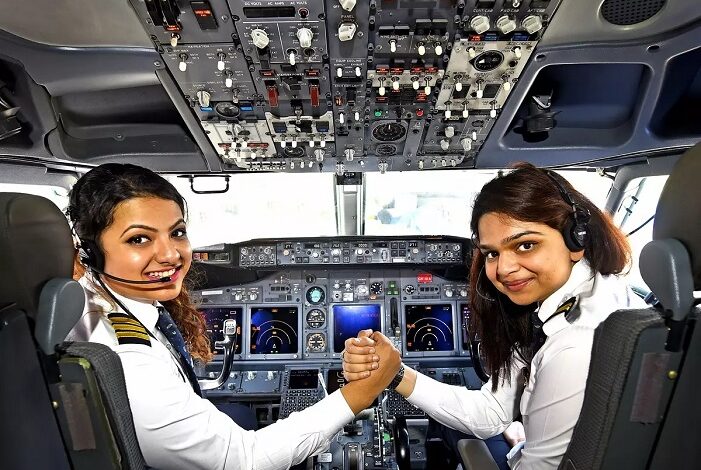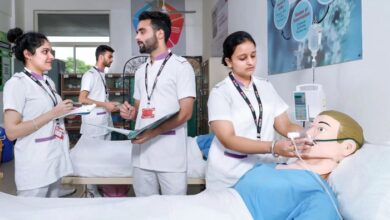1. Understand the Requirements
Before diving into pilot training, it’s essential to know the basic requirements:
- Age: You must be at least 17 years old to begin flight training.
- Education: A minimum of 10+2 education with Physics and Mathematics as subjects is required. However, if you didn’t have these subjects in school, you can take additional courses to qualify.
- Health: You need to pass a medical examination conducted by the Directorate General of Civil Aviation (DGCA). The medical standards are strict, especially for vision, hearing, and overall health.
2. Choose the Type of Pilot You Want to Be
In India, there are several types of pilots you can train to become:
- Private Pilot License (PPL): For those who want to fly privately or for personal travel. This license requires a minimum of 40 hours of flying.
- Commercial Pilot License (CPL): If you want to fly for airlines and earn money from flying, this is the license you’ll need. It requires around 200 hours of flight time.
- Airline Transport Pilot License (ATPL): This is the highest level of pilot certification and allows you to fly as a captain on large commercial aircraft. You need a CPL to pursue this license.
3. Enroll in a Flight School
Once you’ve decided on the type of pilot you want to be, the next step is enrolling in a flight school. In India, there are many DGCA-approved flight schools. Some well-known ones include:
- Capt. Sahil Khurana Aviation Academy (Delhi)
- Indira Gandhi Institute of Aeronautics (Gurgaon)
- Capt. Sahil Khurana Aviation Academy (Delhi)
The training at these institutes includes ground school (theory) and flight training (practical). Ground school covers subjects like aviation laws, navigation, meteorology, and aircraft systems. Flight training is where you get hands-on experience in the air with instructors.
4. Complete Ground School and Flight Training
During your training, you’ll first study theoretical subjects before moving on to practical flying. The curriculum covers topics like:
- Airspace regulations and air traffic control
- Flight planning and navigation
- Aircraft systems and maintenance
- Weather conditions and how they affect flying
As you advance, you’ll start flying real aircraft with an instructor. You’ll gain experience in controlling the plane, performing maneuvers, and handling emergency situations.
5. Get the Necessary Medical Certificate
To fly in India, you must obtain a Class 2 or Class 1 medical certificate from a DGCA-approved medical examiner. A Class 2 certificate is required for a PPL, while a Class 1 certificate is necessary for a CPL and ATPL. The medical exam includes:
- Vision tests (you should have 6/6 vision, with or without glasses)
- Hearing tests
- General fitness examination
6. Accumulate Flight Hours
For a PPL, you need a minimum of 40 flying hours. For a CPL, you’ll need at least 200 flying hours. The flight hours include both solo and dual (with an instructor) time. Accumulating these hours is crucial as it demonstrates your ability to handle various flying conditions and prepares you for more advanced training.
7. Pass the DGCA Exams
The DGCA conducts written exams for both theoretical knowledge and practical flying skills. The exams for PPL include subjects like air law, navigation, meteorology, and flight planning. After passing the exams, you can receive your PPL or CPL.
8. Obtain Your Pilot’s License
Once you’ve completed the required training hours, passed all exams, and completed your medical certification, you can apply for your pilot’s license through the DGCA. This process involves submitting all your documents and test results for verification.
9. Gain Experience and Apply for Jobs
With your CPL, you can start applying for jobs as a commercial pilot with airlines or other aviation companies. It’s common for new pilots to begin as co-pilots or with smaller aviation companies to gain experience. Over time, you can move up to larger aircraft and better-paying positions.
10. Continuous Training and Career Growth
As a pilot, your learning doesn’t stop with your license. You’ll need to undergo recurrent training, medical checks, and upgrade your skills regularly. You may also want to pursue an ATPL if you aim to become a captain of large aircraft.
Conclusion
Becoming a pilot in India is a rewarding career path that requires dedication, hard work, and persistence. By following these steps, you can turn your dream of flying into a reality. Start by meeting the basic qualifications, choose your preferred license, and enroll in a reputable flight school.






